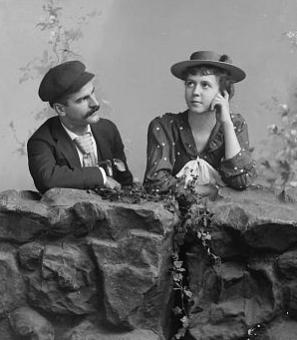Grave Robbing in Washington: A History of the Morbid Trade
Let's take a moment to explore one of Washington’s horrific nineteenth-century professions, the professional grave robber. Known as “resurrectionists” by the media outlets that covered their deeds, grave robbers haunted Washington’s many graveyards and potter’s fields in the cover of night, acquiring bodies to sell to local medical colleges. With several medical colleges operating in Washington during the later decades of the nineteenth-century, the District of Columbia became a hub of grave robbing activity in the United States.[1] Their exploits may be thought of as morbid and disgusting, yet their contribution to modern medical science is an important one that is often ignored by medical historians.
For a medical professional to learn the skills to be a surgeon, a hands-on knowledge of human anatomy is essential. Potential surgeons need to perform dissections on human remains — remains that are intact and with as little decomposition as possible. In today’s society, supplies of subjects for dissection purposes are easy to obtain. In nineteenth-century America, acquiring needed subjects proved to be a challenge. During the eighteenth and nineteenth centuries, death traditions favored the condition of the corpse. Religious views proclaimed the body should be buried in the earth to await eventual resurrection upon the Day of Judgment. Despite the pleas by the medical community expounding the importance of available bodies for dissection, people remained repulsed by the thought of former loved ones lying out upon a dissection table being poked, prodded, and sliced by medical students.[2]
If public opinion being against them wasn’t enough, public laws also made it difficult, if not outright impossible, for medical colleges to acquire the subjects that they needed. The bodies of the dead who were claimed by living relatives were off-limits to colleges unless the families willingly donated the bodies. The bodies of the unclaimed dead — the city’s poor and destitute — also remained out of reach from medical colleges. These bodies instead were claimed and buried by the city in potter’s fields, to remain forgotten in death as they were in life. Left with no other alternative, many medical professionals robbed graves themselves to supply their own needs. This practice continued for many years until the outbreak of the Civil War.[3]
Medical practices and new technologies introduced during the Civil War opened medical minds to new theories and studies in subjects ranging from germ theory to neurology. As interest in medical practices increased and more prospective students began entering medical colleges, the field began to see itself as an important and increasingly elite class in American society. The thought of dirtying their hands procuring bodies for anatomical study became unacceptable for established medical professionals. It was this desire by doctors to limit involvement in the practice of acquiring subjects that left the door open for professional grave robbers.[4]
This growth of professional grave robbers in Washington coincided with the increase in the number of medical students in DC’s many medical colleges. With anatomy and dissection a prerequisite for new students, the demand for bodies began to skyrocket, with prices paid for bodies fluctuating based on seasonal demands. According to one local doctor who became a professional grave robber, it was common to receive upwards of $100 per body sold or $40 per body if the market was glutted. With daily wages for the unskilled around a couple of dollars per day, the life of a professional grave robber could be a lucrative one if you could avoid attention from the police.[5]
Robbing graves required multiple parties to be successful. One person would dig into the gravesite while others kept a lookout for cemetery watchmen, alternating positions when the digger became tired. Once the shovel struck the pine box of a coffin, the robbers would bore a hole into the wood, allowing access for tools to break away the top of the box, exposing the head of the corpse. With a length of rope tied into a noose over the head of the body, the corpse is pulled out from the ground. If the grave robbers were cautious or moral people, the clothing and personal effects of the body were removed and left in the grave, as punishment caught with just the body was less severe than if caught with stolen goods in tow. Others were not so cautious; one grave robber’s wife wore the stolen clothes from the bodies unearthed by her husband. To cover their tracks, the coffin is put back together to prevent sinkholes when the earth is returned to the gravesite.[6]
An unfortunate side effect of the increase in grave robbing affected Washington’s African American community. During the Civil War, federal expansion within the District led to a sharp increase in population, particularly amongst the freed slave population. In 1862, President Lincoln passed the Compensated Emancipation Act, which ended slavery in Washington a full nine months before the wider-reaching Emancipation Proclamation became law. Because of this, the black population increased dramatically in the city. Despite these events, there were few economic opportunities, and many in the community lived in squalid conditions with high mortality rates. With African American cemeteries off of the beaten path and not patrolled regularly, professional grave robbers were known to ply their trade there predominately.[7]
The grave robbing trade grew rapidly in Washington in the late decades of the nineteenth-century. Newspapers were flooded with accounts of their activity while medical professionals commented on the audacity of these individuals (while at the same time supplying the money that kept the trade alive). Dr. Thomas Dwight, a critic of professional grave robbers, lamented about the deplorable conditions of the body trade and their unscrupulous desire for more money.
“Not only has the professional body snatcher flourished, but a new figure has arisen, the dealer in dead bodies who, either by theft or by corruption, is able to distribute them at high rate of payment to colleges throughout the country. The history of the District of Columbia is in this respect a truly disgraceful one. We have had the demoralizing spectacle of some five hundred students among several schools, almost under the shadow of the Capitol, dissecting bodies that everyone knew had been illegally obtained”[8]
The medical community opened Pandora’s Box. They needed a way to keep their supplies flowing while at the same time removing the professional grave robber from the equation.
In 1902, the federal government heard the cry of the medical community. The United States Congress created an Anatomical Board within the District of Columbia that consisted of members from each medical school in the city, a public health officer, and medical representatives from the Army and Navy. Unclaimed dead from the poor community of Washington would be sent to medical schools according to the number of students enrolled each year. This brought to a close the need for the professional grave robber in Washington.[9]
Despite the unsavory nature of the business, nineteenth-century grave robbing produced many positive impacts on the growth of modern medicine.
Footnotes
- ^ Columbian Medical College (today’s George Washington University School of Medicine) was established in 1821 and remained the District’s sole medical university for many years. Georgetown Medical College and Howard University Medical College opened their doors in 1851 and 1867 respectively.
- ^ Gary Laderman, The Sacred Remains: American Attitudes Toward Death, 1799-1883 (New Haven & London: Yale University Press, 1996).
- ^ Dr. Llewellin Eliot, “Comment on Frank Baker’s ‘A History of Bodysnatching,’” Washington Medical Annals, Volume 15, 1916, pg 247-253.
- ^ Michael Sappol, A Traffic of Dead Bodies: Anatomy and Embodied Social Identity in Nineteenth-Century America (Princeton, NJ: Princeton University Press, 2002) pg. 313-319. Shauna Devine, Learning From the Wounded: The Civil War and the Rise of American Medical Science (Chapel Hill: University of North Carolina Press, 2014) pg. 262-263.
- ^ Dr. Llewellin Eliot, Washington Medical Annals, pg. 249. Other historians have disputed Eliot’s claim of how much bodies were worth to the medical community, with some claims of $15 to $30 on average. However, most studies are not centered around Washington, D.C., so Eliot’s claims could have been correct for the D.C. area. See Sappol, A Traffic of Dead Bodies, pg. 313-319.
- ^ “Raising the Dead: A Physician’s Glib Discourse on the Ghastly Subject,” The Washington Post, April 1, 1883.
- ^ “Ending Slavery in the District of Columbia,” http://emancipation.dc.gov/page/ending-slavery-district-columbia. See The Evening Star, December 15, 1873 for an example of one grave robbers exploits in African American cemeteries.
- ^ Thomas Dwight, “Anatomy Laws versus Body Snatching,” The Forum, December 1896, pg. 499.
- ^ Dr. Arthur M. Lassek, Human Dissection: Its Drama and Struggle (Springfield, Ill: Thomas, 1958, pg. 230-231.


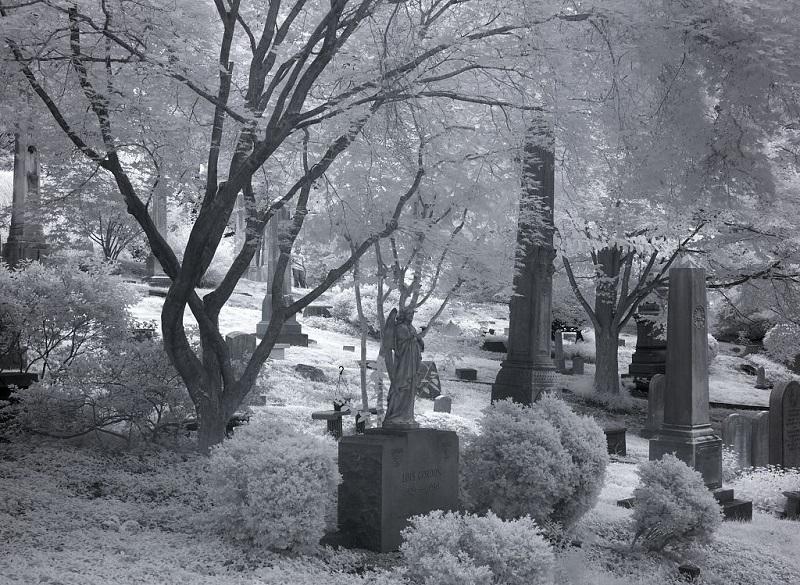
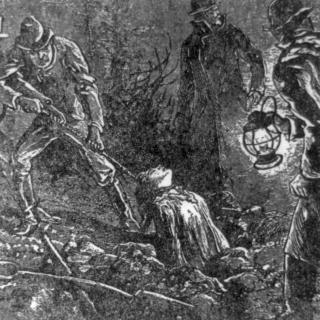
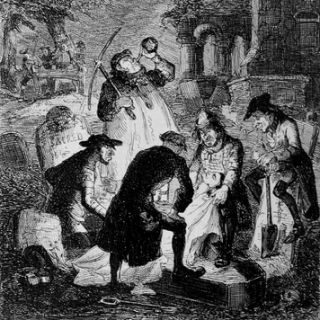
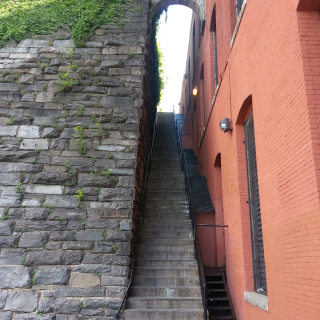
![Sketch of the mythical fuan by Pearson Scott Foresman. [Source: Wikipedia]](/sites/default/files/styles/crop_320x320/public/2023-10/Goatman_Wikipedia_Faun_2_%28PSF%29.png?h=64a074ff&itok=C9Qh-PE1)











